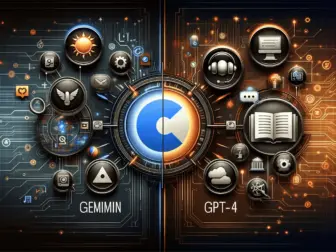Tag - Multimodal AI
Exploring the Versatile World of Multimodal AI: Harnessing Multiple Data Types
Exploring the Versatile World of Multimodal AI: Harnessing Multiple Data Types
In the burgeoning field of artificial intelligence, a fascinating development has been the rise of multimodal AI. Unlike conventional AI systems that rely on a single type of data input, such as text or images, multimodal AI refers to systems that can interpret, understand, and learn from multiple forms of data. Essentially, these systems can process and analyze data in various modes, such as visual, auditory, and textual information, to perform tasks that require a comprehensive understanding of the world.
One of the central motivations for developing multimodal AI is the aspiration to create machines that can interact with the world in ways similar to humans. Human perception is inherently multimodal; we understand our environment by synthesizing information from our eyes, ears, and other sensory organs. To create AI that can genuinely comprehend the nuances of human environments and communication, incorporating multimodal data processing is essential.
Multimodal AI systems use sophisticated algorithms to integrate and interpret information from different sensory channels. This integration allows for more nuanced and accurate representations of real-world situations, leading to improved decision-making capabilities. For example, a multimodal AI system in a self-driving car might combine visual data from cameras, auditory data from microphones, and text data from road signs to navigate safely and efficiently through traffic.
Another application of multimodal AI is in the field of natural language processing (NLP), where AI systems are designed to understand and generate human language. By incorporating visual data, these systems can provide context that enhances their ability to comprehend and produce language. For instance, a multimodal AI could analyze a social media post by looking at the image, the text, and the tone of voice in a video clip to understand the sentiment behind the post more accurately.
In healthcare, multimodal AI has the potential to revolutionize patient care by combining medical imaging, patient history, lab results, and even notes from physicians to provide more accurate diagnoses and personalized treatment plans. By drawing from a diverse data set, these systems can identify patterns and correlations that might be missed by traditional, unimodal analysis.
The development of multimodal AI does, however, come with its own set of challenges. Integrating data from different modalities can be technically complex due to the varying natures of the data. For instance, temporal data, such as audio and video, must be synchronized with static data, like images and text. Moreover, designing algorithms that can effectively combine and interpret these different data types is an ongoing area of research.
Another challenge is ensuring that multimodal AI systems are equitable and unbiased. Since these systems are trained on data that reflects the real world, they are susceptible to the same biases present in the input data. Developers must be vigilant in curating diverse and representative datasets to avoid perpetuating or amplifying societal biases.
In conclusion, multimodal AI represents a significant advance in the quest to create more intelligent, versatile, and human-like artificial intelligence. By leveraging the strengths of different data types, these systems can achieve a more holistic understanding of complex environments and tasks. As research and development in this field continue to accelerate, we can expect to see multimodal AI increasingly integrated into various aspects of our lives, from healthcare and transportation to entertainment and customer service. The promise of multimodal AI is to not only enhance machine capabilities but also to pave the way for more intuitive and natural interactions between humans and machines.


